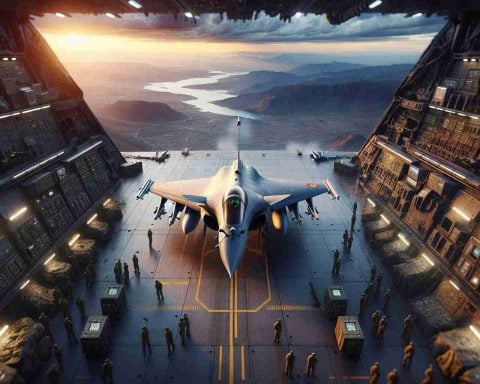Russian President Vladimir Putin has made headlines with bold statements about the Oreshnik missile, an intermediate-range ballistic weapon he believes could diminish the need for nuclear weapons. Launched on November 21 at the Ukrainian city of Dnipro, this missile is based on the formidable RS-26 Rubezh and reportedly carries six conventional warheads, boasting a range of 3,100 miles.
The power and speed of the Oreshnik are central to its significance in modern warfare. Putin claims its speed, reaching Mach 10, makes it impervious to missile defense systems, suggesting it could rival the devastating effects of a nuclear attack without crossing the nuclear threshold. This sentiment reflects Russia’s recent shift in nuclear doctrine, crafted to address perceived international threats, with the Oreshnik playing a critical role.
Conversations surrounding the missile arose during a meeting with Russia’s civil society council, where participants discussed Russia’s military posture amidst global tensions. Putin insisted that instead of tightening nuclear protocols, focusing on systems like the Oreshnik offers strategic advantages.
The missile’s deployment in Belarus adds another layer of complexity to the geopolitical landscape. Although Belarusian leader Alexander Lukashenko supports this move, critics like Franak Viačorka warn it may destabilize regional security and undermine Belarus’ sovereignty. Nevertheless, Putin remains steadfast, painting the Oreshnik as both a technological marvel and a political statement, designed to provoke the West while maintaining a veneer of defensive justifications.
Revolutionizing Warfare: How Russia’s Oreshnik Missile Challenges Global Security Dynamics
In the ever-evolving landscape of modern warfare, the Russian Oreshnik missile has emerged as a game-changer, capturing international attention with its advanced capabilities and strategic implications. This intermediate-range ballistic missile, lauded by Russian President Vladimir Putin, carries significant potential to shift global defense paradigms through its unparalleled speed and tactical deployment.
Features and Specifications
The Oreshnik is modeled on the RS-26 Rubezh and equipped with six conventional warheads, showcasing an impressive range of 3,100 miles. Its primary strength lies in its velocity, achieving speeds up to Mach 10. Such speed purportedly renders existing missile defense systems ineffective and positions the Oreshnik as a formidable force that could potentially achieve the impact of a nuclear strike without utilizing nuclear warheads.
Strategic Implications and Geopolitical Impact
Positioned as a critical asset in Russia’s military arsenal, the introduction of the Oreshnik missile symbolizes a notable shift in Russia’s nuclear doctrine. With an emphasis on high-speed, conventional weaponry, this shift answers to international security challenges and reflects a strategy to deter perceived threats while simultaneously reducing reliance on nuclear armaments. Its deployment in Belarus further complicates Eastern European security, raising concerns about regional stability and the balance of power.
Pros and Cons of Oreshnik Deployment
The deployment of the Oreshnik missile in Belarus has sparked a variety of discussions:
– Pros: The missile’s capabilities enhance Russia’s deterrence without breaching nuclear thresholds, potentially offering stability in deterrence calculus.
– Cons: Critics argue it exacerbates regional tensions, threatening Belarusian sovereignty and inciting militarization within its neighboring countries.
Market Analysis and Trends
The development and deployment of the Oreshnik reflect broader trends in military technology focusing on speed and precision. Nations worldwide are now spurred to enhance missile defenses and reconsider their military strategies, aiming to preemptively address potential vulnerabilities exposed by the Oreshnik’s advancements.
Security and Sustainability Aspects
While Russia highlights the Oreshnik as a defensive innovation, the missile’s introduction raises questions regarding long-term security strategies and sustainability. Its deployment signals a growing need for international dialogue on arms control frameworks that can accommodate such technological breakthroughs and ensure global stability.
Future Predictions and Innovations
The Oreshnik represents the forefront of military technology; its existence suggests future weapon systems may continue to evolve towards non-nuclear but highly effective technologies. As global powers race to develop comparable capabilities, the shift towards intermediate-range, rapid-response weapons systems is poised to define future military tech advancements. Observers predict that international arms discussions will increasingly pivot around these innovations as nations seek to establish norms and protocols to manage their proliferation.
To understand more about modern missile systems and defense technologies, visit Defense.gov for comprehensive insights and updates.



















